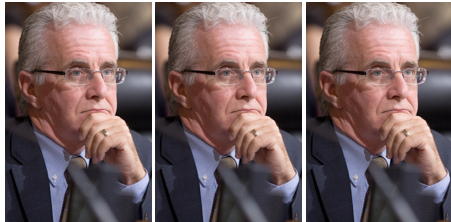A WIN FOR TRANSPARENCY-The truth about the behind-the-scenes battle over the Archer School for Girls’ building project may soon be revealed now that the City of LA has lost its fight to keep secret the contents of 146 emails written by or to city officials, including Councilman Mike Bonin, during the heat of this controversy.
The winner in this fight for greater government transparency is the Sunset Coalition, a non-profit public advocacy group organized to oppose the controversial $100 million Archer campus expansion project. The project was approved in August 2015 by the City Council.
“The city and Archer wrongly withheld these emails in violation of the law,” said Brentwood resident Zofia Wright. Wright and her husband, David, are leaders of the Sunset Coalition.
“The judge’s ruling is a major victory for transparency and open government,” added Wendy-Sue Rosen, president of the Brentwood Residents Coalition. “Now we will be able to see what the City has been trying to hide from the public.”
The fight over the emails is one chapter in the Coalition’s larger legal fight to overturn the City Council’s decision to allow the Archer expansion project to go forward.
In its lawsuit, the Coalition has alleged Archer’s massive expansion project will overwhelm Brentwood with its illegally large structures, jeopardize the health of its own students with toxic fumes and swamp already-paralyzed Westside streets, including Sunset Boulevard, with “tens of thousands” of additional vehicle trips.
The LA Superior Court lawsuit argues that the campus expansion project – involving nearly a quarter million square feet of construction and tens of thousands of construction-related truck trips – will “significantly burden not only the nearby residential community, but also the entire west side of Los Angeles.”
According to recent city records, Archer spent $985,016 to hire the law firm of Latham & Watkins and Sugerman Communications to lobby City Hall officials and influence their decision-making.
Initially, the city vigorously opposed full public disclosure of the contents of 173 emails sought by the Sunset Coalition and its plaintiff-partners, the Brentwood Residents Coalition, the Brentwood Hills Homeowners Assn. and the Wrights. The 173 emails were among thousands of City Hall documents initially delivered to Archer’s opponents in November.
During their inspection of these documents, the opponents found these 173 emails that were heavily redacted or otherwise obscured without a valid reason. The coalition filed a motion to gain full disclosure of their contents.
Superior Court Judge Robert H. O’Brien agreed there was a problem and ruled that 146 of the 173 documents contained information that should be fully released without being censored.
O’Brien noted that “many [of the emails] reflect public commitments, efforts for compromise, evaluation of community interests, balancing interests, and frustration and venting regarding efforts at compromise apparently overseen by the councilman’s office….Also many reflect internal on-going negotiations.”
O’Brien observed that some of the email comments were so frank and revealing that it is clear the authors “never meant [them] for general circulation.”
“This ruling could have a major impact on the way the city does business in the future,” predicted Coalition attorney Doug Carstens, a partner in the the law firm of Chatten-Brown & Carstens. “Public employees, including elected officials, must realize that their emails can be open to the public. After all, these officials work for the public, not the other way around.”
Proposition 59, passed by voters in 2004, unequivocally established the public’s right of access to the writings of public officials. Proposition 59 amended the state Constitution to provide: “The people have the right of access to information concerning the conduct of the people's business, and therefore, the meetings of public bodies and the writings of public officials and agencies shall be open to public scrutiny.”
“The public's right to access records of public agencies is enshrined in our state Constitution,” said Carstens. “Despite this, the City sought to keep documents from being disclosed. That attempt has been resoundingly rejected by the Court.”
Carstens and Coalition members plan to soon begin a comprehensive review of the controversial emails.
The coalition’s review of the mountain of documents released earlier by the city has already produced surprises.
For example, early on in the Archer controversy, Bonin appeared to be an ally of the many Brentwood neighbors deeply concerned about the project’s impact on the community and on Sunset Boulevard traffic. But in the spring of 2015, only weeks before Archer’s project was scheduled for a council vote, project critics were blindsided by Bonin when he abruptly and publicly endorsed the school’s plan.
Now, however, after reviewing the trove of documents and emails that were previously released, the Coalition has learned that Bonin in 2014 had already reached a private deal to support Archer’s plan even though he continued to falsely represent himself as an ally of concerned critics until the spring of 2015.
“We had to sue,” said Zofia Wright. “It is the only way we can obtain the protections for the community that our elected leaders failed to provide in the first place.”
(John Schwada is a former investigative reporter for Fox 11 in Los Angeles, the LA Times and the late Herald Examiner and is the Communications Director for the Neighborhood Integrity Initiative. He is a contributor to CityWatch. His consulting firm is MediaFix Associates.) Prepped for CityWatch by Linda Abrams.






















 There are many legitimate reasons why a tenant may not pay the alleged rent owed and will not have it available for deposit. He or she may dispute the amount of rent due because the payment was lost. (Photo right: Assemblyman Gatto.)
There are many legitimate reasons why a tenant may not pay the alleged rent owed and will not have it available for deposit. He or she may dispute the amount of rent due because the payment was lost. (Photo right: Assemblyman Gatto.) 










